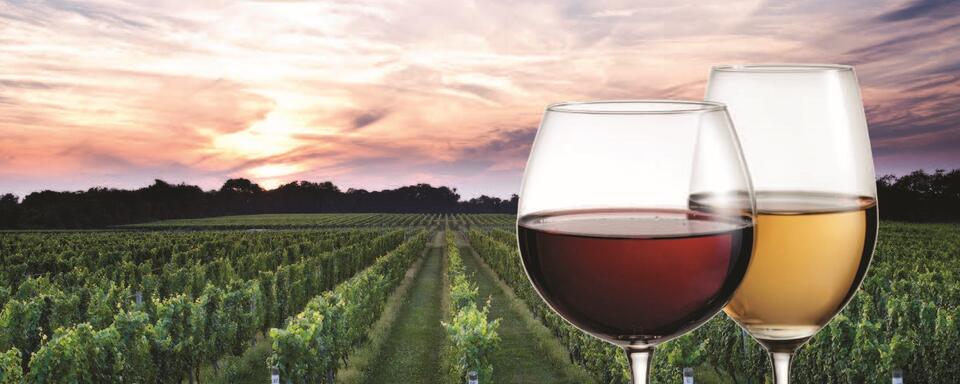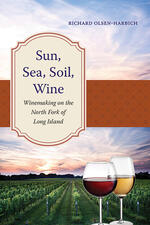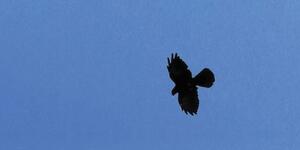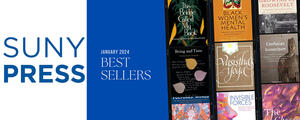
Growing North Fork Wine: A Terroirist Manifesto
Guest post by Richard Olsen-Harbich
Fifty years ago, no one ever thought that the East End of Long Island would become home to one of the country's most interesting wine-producing regions. Since 1973, more than three thousand acres of European wine grapes have been planted in the area, with many of the wines drawing international praise. The West Coast still dominates the American wine market, but since that time, other areas have shown that great wines can indeed be grown and produced elsewhere within the fifty states.
In my recent book, Sun, Sea, Soil, Wine: Winemaking on the North Fork of Long Island, I tell the story of this exciting and emerging wine district. Fifty years after the first Cabernet Sauvignon and Pinot Noir vines were planted, the North Fork has become home to over forty vineyards and wineries, creating one of the most concentrated viticultural hubs on the East Coast.
Ever since I was a young boy I have been interested in the outdoors and the natural world. This led me to study agriculture and eventually, viticulture and winemaking at Cornell University. Upon graduation in 1983 I was hired to run the second winery on Long Island in Bridgehampton where I stayed for 10 years before moving to the North Fork. I have been making wine there ever since for dozens of estates in the region including Raphael, where I worked with the late Paul Pontallier from Chateau Margaux. Since 2010 I have proudly served as the winemaker at Bedell Cellars, producing some of the top-rated wines on the East Coast.
Just so, after almost five decades, I found myself running into people who would ask, ‘Why are you making wine here?’ There have been a few books written about our local wine industry, but a complete story of North Fork wine remained untold, lacking an in-depth analysis of what fueled the region’s success. After more than forty years as a winemaker, I believed I had a wealth of insights to share about this enchanting area.
Wine aficionados typically define regions as Old and New World. “Old” referring to temperate Europe and parts of Asia - and “New” defined as the warm and dry American West Coast, South America, Australia, and New Zealand. The North Fork doesn’t fit this traditional New World narrative as it physically and stylistically lays somewhere in the middle. In my book, I introduce the term “Cool New World” to redefine how we talk about North Fork wine and its place in the world.
The fascinating part of Long Island wine history is that it goes back five hundred years. Verrazzano was the first European to visit Long Island in 1524 and took extensive notes on his journey. He pointed out the vast number of wild grapevines growing along the coast and was the first to allude to the possibility of producing wine in the area. One hundred years later, Dutch explorers thought the same thing and wrote about the possibility of growing wine as an incentive for further investment and exploration. Over time, numerous viticultural failures gave way to other, more lucrative New World ventures such as fur trading, tobacco, and sugar. It took hundreds of years for the idea to be revisited.
Writing a book, for me, proved more challenging than making wine, yet parallels exist. A growing season in a vineyard mirrors a thick, well-written novel that has a large cast of characters and a plot that takes many twists and turns before concluding. Wines in a barrel are like words on a page, there are chances to edit, blend, rework, and proofread before they go into the bottle. Both tasks require a level of skill, time, and information and once completed, are subject to review and evaluation from critics. In both cases, a time eventually comes when one must be content with the results, and comfortable that their creation can stand the test of time.
I fondly refer to this book a love letter to the North Fork. This beautiful part of the world, amazingly located less than one hundred miles from the largest metropolitan area in the United States, is neither too hot nor too cold. It is a true “Goldilocks” area for wine growing. Through this book, my hope is that more people will understand how special this area is and savor the delightful and delicious wines it produces.
Richard Olsen-Harbich is a winemaker, viticulturalist, writer, and artist. He has won many awards, including the 2008 Edible Hero Award, Edible Communities; 2013 Unity Award, New York Wine and Grape Foundation; and the 2022 Best North Fork Winemaker, Northforker Magazine.


